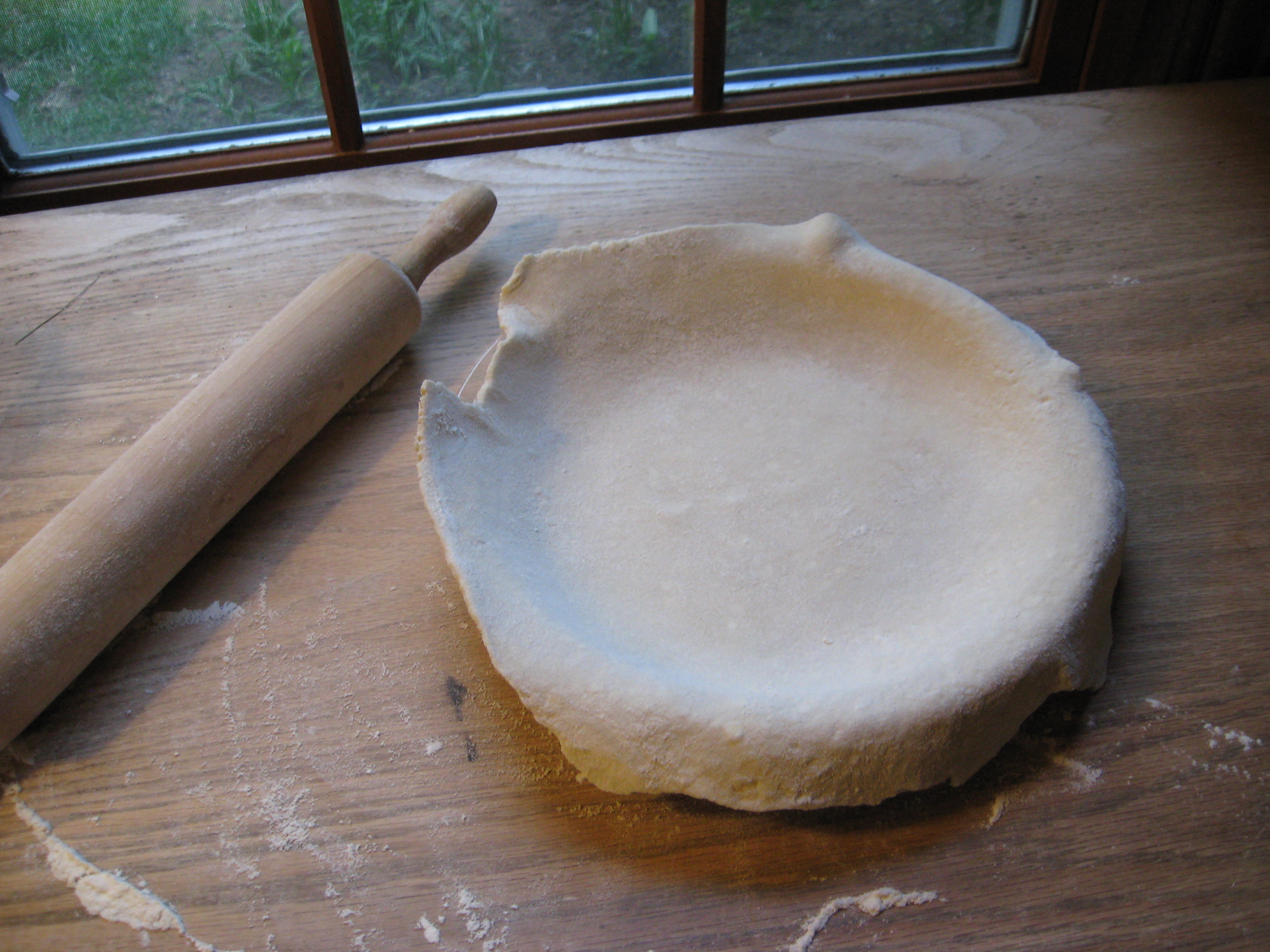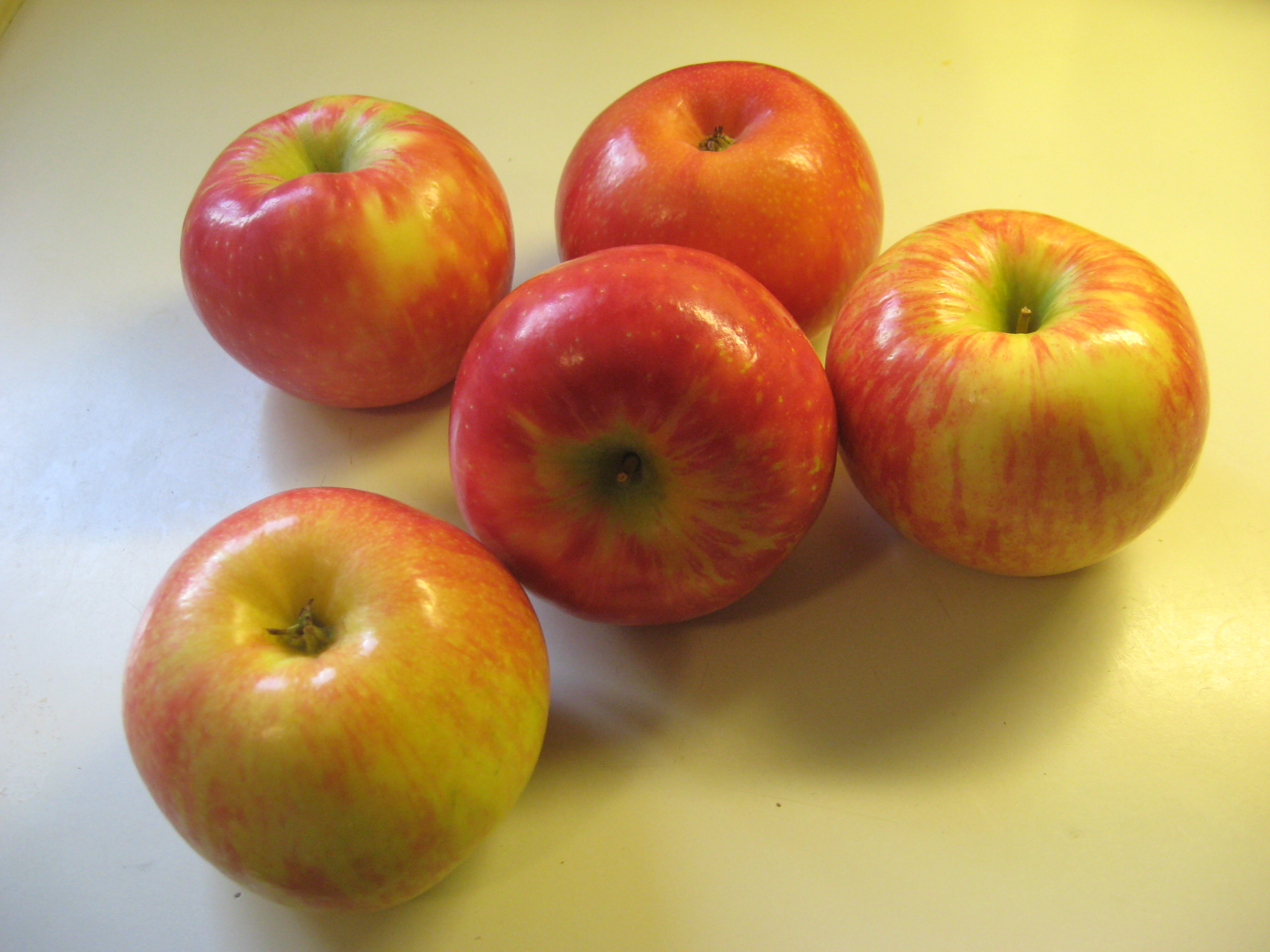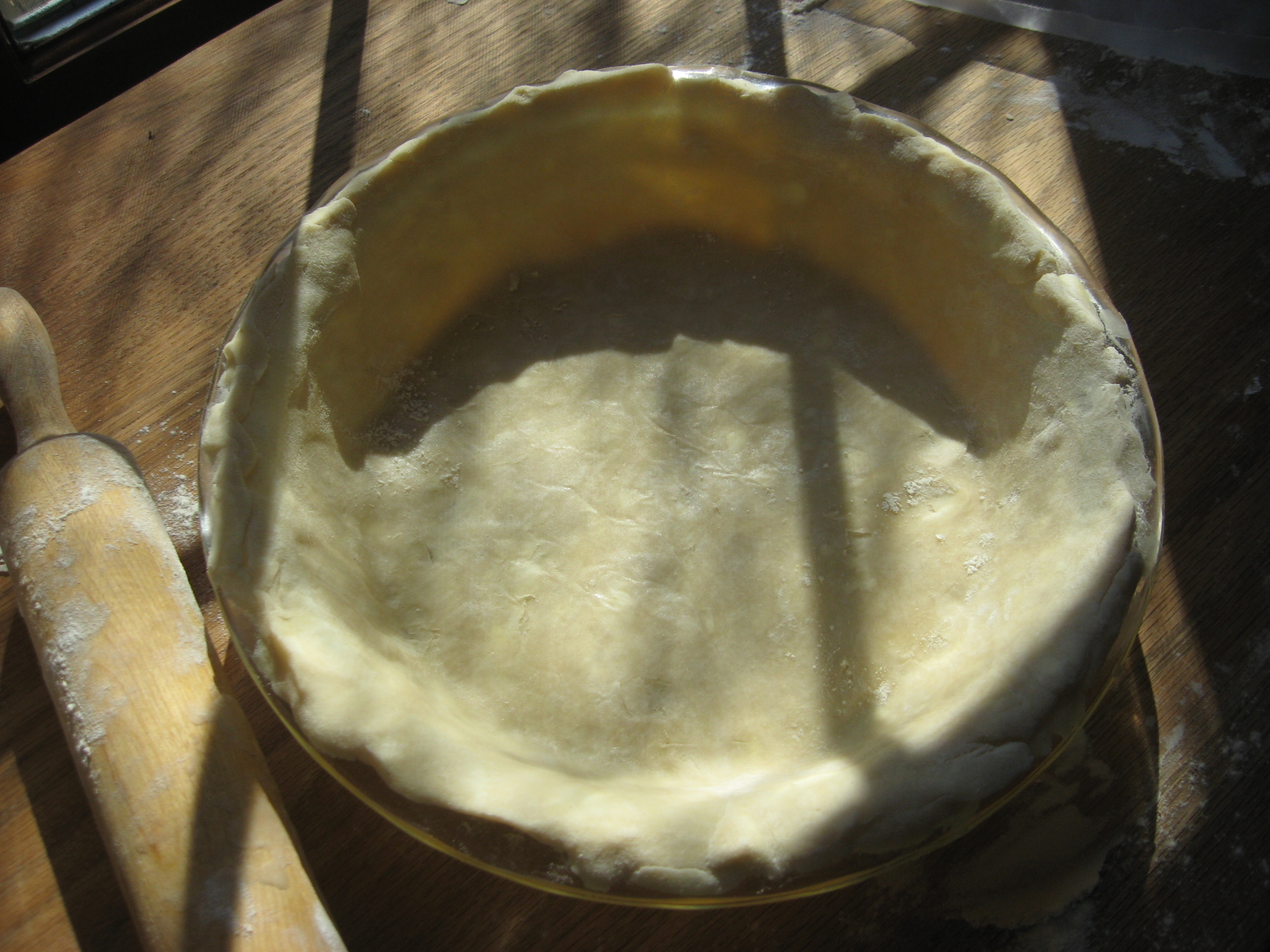Among the infinite activities that we humans concoct, codify, and ritualize, none is more pleasurable, more satisfying, or more mysterious–in the kitchen, that is–than the creation of pie crust. Each of us is hungry for excellence, has her and his own preferred approach and method, and will be damned if anyone else’s is as good as theirs, or their wife’s, or their mother’s. In my mother’s case, it is her mother’s apple pie that set the standard and gave delight–or the memory of those pies, which is another reality altogether. To pull Borges slightly out of context, “…man’s memory shapes / Its own Eden within….” As a child, Nonnie’s mother’s pie crust provided the ideal. My mother’s was mine, then supplanted by Nonnie’s on my palate and in my mind. (“How sharper than a serpent’s tooth it is / To have a thankless child! Away, away!”)
Having been blessed and cursed these recent months with more time than I once could only dream of, I have cut my own swath though the kitchen, targeting recipes that appear to be tasty, nutritious, and fun to make. For dessert, I’ve had great luck with apple-pecan tarts, semolina-almond torta, princess pudding (a variety of dark-chocolate mousse), ginger-molasses cake, Boston cream pie, apple clafoutis, and mango tres leche cake. So with a dash of experience and a sprinkling of confidence, I approached pie crust, only to be confronted with a confusing array of styles. There were too many ways to go. I didn’t know how to choose one that I could make my own. Pie dough with butter, with vegetable shortening, with vegetable oil, with some combination of butter and shortening, or with lard. Lard produces the best flavor and the most flakiness, I repeatedly read, but it’s meat-based so out of the question. Five times I tried to make an apple pie, and five times I failed. The filling tasted fine, but the crusts were shoe leather. The crusts looked all right, lightly brushed, as they were, with egg white, so nicely browned, and sprinkled with sugar and cinnamon, scalloped around their circumference or with a raised ridge or with an edge made flush with the tines of a fork.

For my first attempt at apple pie, I used an all-butter crust. I made two crucial mistakes: I overworked the dough, and I rolled it out too thick.

Clumsy but charming, in a roadside stand sort of way. But the crust was tough, chewy, and inedible. I chose a somewhat different all-butter crust recipe for the second pie and again used a food processor to mix the dough. Again, I overworked it. How tough was the crust? It reminded us of the Three Stooges making their way through Southern Comforter Cake.


I had been having success using Cortland apples for the filling, but was lured by a recipe into using Honeycrisp for my fifth attempt. They're pretty, but Cortlands offer better taste and texture, it seems to me.

You can't judge a book by its cover. The crust, once again, was impossible to eat. My fifth apple pie was another failure.
This last dud prompted me to pull back, do some research, and let it go for a while. I sorted through a few of Nonnie’s cookbooks, read about pie dough online, and picked up a book at the library by Ken Haedrich simply called Pie. There was a nice, thorough introductory section about the different approaches to pie dough, from the fat content to which crusts are right for different fillings. Haedrich encourages you to try many types of pie crust, working by hand, food processor, and mixer to see how the results differ by appearance, taste, texture, and flakiness. Sometimes the bottom crust should be pre-cooked, sometimes not. Sometimes a butter crust is right, and sometimes you should go with Crisco. Heck, I just wanted one that worked. Crisco. I remembered that cute Crisco scene in The Help, about it being your best friend. I remembered this, too:

Now I was even more confused. So I did what any humble, self-respecting American pie maker would do. I turned to the Bible. The Joy of Cooking, that is (1983 ed.). The basic pie dough here called for a combination of butter and shortening. All right, then. And that peach pie in Haedrich’s book sounded pretty good. He said frozen peaches in a bag are often better than store-bought peaches since they’re flash frozen on the farm so soon after picking. Interesting. And it doesn’t call for a top crust but for a crumb topping made of crushed almonds and coconut. More interesting. I girded my loins and entered the kitchen.

The filling couldn't have been easier to prepare: two 1-pound bags of frozen peaches, 1 1/2 tablespoons fresh lemon juice, the finely grated zest of one lemon, and 1/3 cup of sugar. Let rest for 10 minutes. Mix 2 tablespoons of cornstarch with 3 tablespoons of sugar, and add to the fruit mixture. Stir in 1/2 teaspoon vanilla extract and 1/4 teaspoon ground nutmeg.

This time, the dough felt right and looked right. I blended the flour, salt, butter, and shortening by hand with a pastry blender, and the ice water with a pastry fork, being mindful not to overwork the dough. It was clear from the start that the crust recipe in The Joy of Cooking wouldn't give me enough dough for a 9 1/2-inch pie pan, but I liked the way the dough was coming together, so I kept on. The result was a crust edge that was too thin and too quick to brown, but so be it.

Did I dare to hope that this pie would come out all right? Varlam Shalamov, the great Russian writer and Gulag survivor, wrote that, in the prison camps, "Hope is the enemy." Varlam, I wish I could make this pie for you, you dear soul.
With the pie in the oven, let’s relax and enjoy this wonderful performance by Loretta Lynn. Nobody pronounces “baby” better than Loretta Lynn.


I pressed down too hard with my hands on the crumb topping, making it more of a helmet. A looser, rougher surface texture would have better. But the almond-coconut topping tasted real fine, adding an interesting flavor profile to the plump, juicy peaches.
What did I learn? I experienced for myself what I recalled Nonnie had come to understand when we were first married and she was determined to make bread by hand. You’ll go through a lot of dough. You’ll fail. You’ll learn from your failures. Ah, once again, I hear Bob Dylan rummaging around. “Love Minus Zero/No Limit” comes to mind:
Some speak of the future
My love she speaks softly
She knows there’s no success like failure
And that failure’s no success at all


